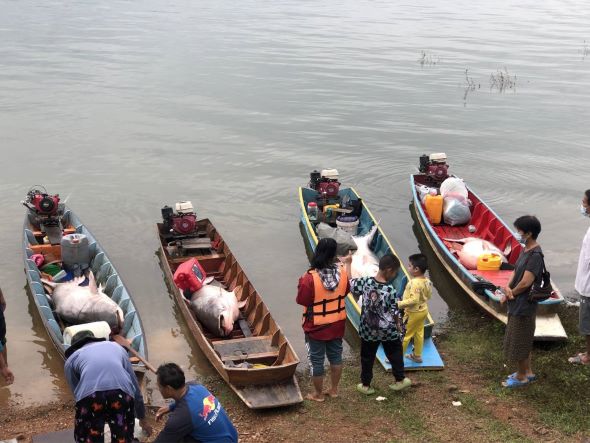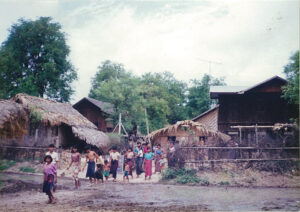Pilot study
"Coexistence mechanisms of freshwater megafishes in a reservoir in Thailand"
R4 2-3 (R4 AY2022)
| Project Leader | Medo Ayano(Kyoto University, Graduate School of Informatics) |
| Research Project | Coexistence mechanisms of freshwater megafishes in a reservoir in Thailand |
| Countries of Study | Thailand |
Outline of Research
Megafauna require a large amount of food sources to maintain body size and growth, which can limit species numbers and/or population size of megafauna in a habitat. However, coexistence is observed of large fishes that have been released into reservoirs for species conservation and stock enhancement in Thailand. I hypothesize that the avoidance of food resources among the large fish results in such coexistence in reservoirs. The project investigates body size and resource partitioning among two large fishes, Mekong giant catfish (Pangasianodon gigas) and striped catfish (Pangasianodon hypophthalmus), after release into several reservoirs in Thailand.
Purpose of Research, Its Significance and Expected Results, etc.
The goal of this project is to determine the factors influencing coexistence and high growth of freshwater megafishes based on feeding habits. Mekong giant catfish (Pangasianodon gigas, 3 m at maximum body length) and striped catfish (Pangasianodon hypophthalmus, 1.3 m at maximum body length), both endemic to Southeast Asia, have been used as a food source for local people. However, both species are now listed on the International Union for the Conservation of Nature and Natural Resources (IUCN) Red List of threatened species as Critically Endangered and Endangered, respectively. As part of species conservation and fisheries enhancement efforts, Thailand’s Department of Fisheries has been stocking hatchery-reared juveniles of both species into reservoirs, but these stocking projects have not made a significant contribution to resource restoration. This project first investigates food resource partitioning among Mekong giant catfish and striped catfish using stable isotope analysis. It then compares feeding habit data against body size data after release into several reservoirs.
The limited information available on the ecology of megafishes of Southeast Asia is hindering effective fish stocking efforts based on scientific knowledge. This project investigates new fields, comparing ecological traits of various reservoirs to research the Mekong giant catfish and striped catfish living there. The findings will provide information on the coexistence and high growth of these fish species, which can play an important role in future fishery resource enhancement and stable food supplies in this region. Additionally, to build a good relationship between Japan and Thailand, ensure prompt dissemination of the research achievements, and share problems in resource management with local people, the project includes researchers and fishermen from both countries.




